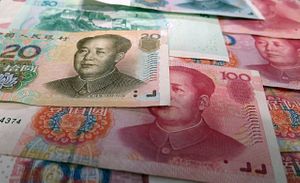Trans-Pacific View author Mercy Kuo regularly engages subject-matter experts, policy practitioners, and strategic thinkers across the globe for their diverse insights into U.S. Asia policy. This conversation with DailyFX Markets Analysis Team is the 164th in “The Trans-Pacific View Insight Series.”
DailyFX Markets Analysis Team is a research group that provides analysis of market moves, explaining economic, political, and technical factors driving the market.
Describe three plausible scenarios of how the U.S.-China trade dispute could unfold.
When trade disputes escalated in April, it set off three scenarios.
Scenario 1: The U.S. and China have disputes but are able to avoid country-level tariffs. This has failed.
Scenario 2: The U.S. and China cannot reach a deal to avoid major tariffs, but the disputes stay within the scope of trade.
Scenario 3: The scope of the disputes expands from trade to other aspects.
The scenarios are based on how many disputes are involved and how complicated the involved disputes are. Recent signs, such as U.S. Vice President Mike Pence’s speech, show that the trade war is moving from scenario 2 to scenario 3. The more questions involved, the longer it may take for the two sides to reach an accord. Thus, it is important to come back to the core questions and try to find a solution to them.
Identify two key variables that could improve U.S.-China trade tensions.
Trade deficits and industrial policy are the two key questions. The U.S. is a developed economy, while China is a developing economy. It is not surprising that the two countries have different needs in different stages of development.
On trade deficits, a developing economy with lower purchasing power could act more like a producer than a consumer compared to a mature economy. The accumulated consequence in trade over a decade is significant.
On industrial policy, both countries agree on a more market-driven and open-economy framework; however, they could have a different view on the route, the pace, and the priorities.
What is a possible timeframe for these issues to be resolved?
It is easier to negotiate on a goal that can be numerated. This is similar to negotiating on a salary. In terms of the trade deficit, both sides may have already had a clear idea on the target or an acceptable range. This could only take weeks to months to be resolved. In fact, a deal of China purchasing $70 billion worth of American products annually was close to being signed in June. However, due to the challenge in the second question, it was not.
Industrial policy is more difficult to measure and more subjective depending on each person’s view. Multiple industries involved made the issue even more complicated. For each side, they will first need to get an internal consensus on what an acceptable target is — for instance, a consensus between the White House and the U.S. Department of Commerce.
Processing information, clarifying each country’s own goals, turning ideas into practical proposals, and then negotiating will all need time. This could take months or longer.
Based on the most realistic scenario, how will U.S. and Chinese consumers feel the consequences of increasing tariffs?
The U.S. consumers will feel the impact on a wider range of products, after the second round of U.S. tariffs on $200 billion Chinese goods took into effect on September 24. In this round, consumer products, such as food and televisions, have been included. The U.S. consumers may face a greater impact if the proposed tariffs on additional $257 billion Chinese goods are approved. To minimize the consequence, the U.S. administration may launch subsidies, such as the $12 billion bailout offered to U.S. farmers.
For Chinese consumers, they are facing more expensive American products due to the tariffs too, from agriculture products to automobiles. Due to a surplus in trade, China is not able to simply impose tariffs on the same amount of American goods. This could make Chinese consumers less hurt than Chinese producers. To minimize the consequences, the Chinese administration has cut tariffs on goods from third-party countries in an effort to provide alternatives to consumers.
For the U.S. policy community, what are salient indicators of how a U.S.-China trade war could affect global currency markets and RMB valuation?
First, the trade war has an impact on the global currency market. For both the yuan and the U.S. dollar, it is a negative impact as it has added uncertainties to both the Chinese and the U.S. economies. As a consequence, some investors may have shifted to safe-haven currencies, such as the Japanese yen.
Second, there are other important drivers to the dollar/yuan. The two central banks are on different tracks of monetary policy: The U.S. Fed has increased interest rates twice since the escalation of the trade war, in June and September, while China’s PBOC [People’s Bank of China] cut the target reserve requirement ratio twice, in July and October. Each is consistent with its own economic conditions: the U.S. economy has seen steady improvements; the Chinese economy is in a transition phrase and is shifting from a focus on growth speed to the quality of growth.
Last but not least, the Chinese yuan has a unique exchange rate regime: a managed-floating system. This is different from free-floating currencies, like the majors, and from strictly-pegged currencies such as the Hong Kong dollar. The unique system reflects the development stage of China financial market, moving from a fully-closed market to fully-open. For the U.S. policy community, PBOC’s daily reference rate is a gauge worth watching. It is a combination of the regulator’s guidance, a closing price in the previous day, and overnight market moves. This helps reveal clues on the degree of China’s openness and changes over time.































